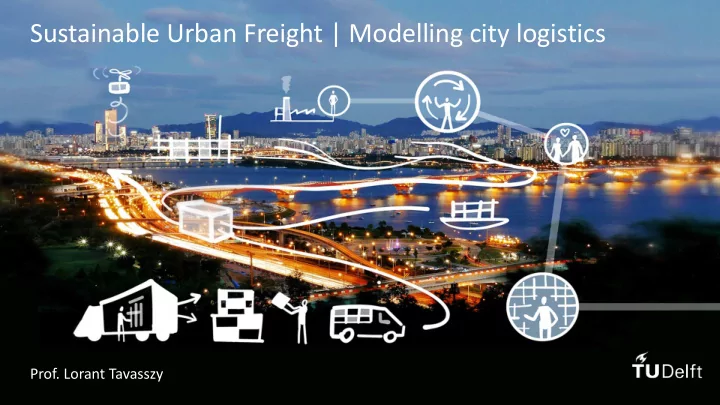

Sustainable Urban Freight | Modelling city logistics Prof. Lorant Tavasszy
Further reading: Co Content 1. Why model city logistics? 2. What are typical modelling problems? 3. What are the main techniques used?
Mo Modellin lling freig ight flo lows in in the cit ity Why? - Make movements inside city visible for all - Provide numbers for a sense of proportion - Design strategies & policies - Predict effects of changes
Ty Typical mo mode delling ng pr probl blems ms Consumer: - What to buy where, when? Carrier Shipper Receiver: - How much to order? Urban Shipper: Consolidation Center - Own account or professional carrier? Carrier: - Which route to follow? - Use city warehouse? - Electric or diesel truck? Receivers 2020 2018 Electric truck
Ci City-wide modelling (“commodity ty based”) Freight Generation Model Consumption Production Origin/ P/C table Destination tables by mode Mode Traffic Choice Assignment Model Model Spatial Distribution Model Warning: empty trips! (e.g. gravity model)
Si Simplified c city-wide modelling (“tri trip based”) Trip Generation Model Validate Against Traffic Trip attraction Observations Trip production O/D table (road) Traffic Assignment Model Spatial Distribution Model (e.g. gravity model)
De Decisi sion Su Support System (h (here: Ur Urban an Strategy) ) Source: TNO
Warehouse Ad Advan anced models Receiver Shipper 1. Accurate logistics (e.g. tours, shipment sizes, inventories) 2. Simulating dynamics of daily movements 3. Modelling stakeholders Source: TNO, TU Delft (Agent Based Models)
Su Summar ary A brief introduction into freight modelling at city level • Typical modelling problems • Main modelling approaches • Directions for research
Recommend
More recommend